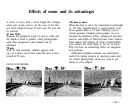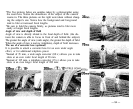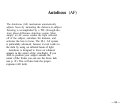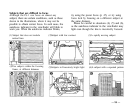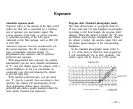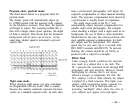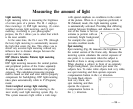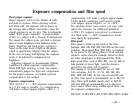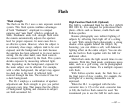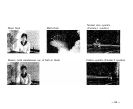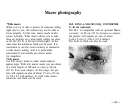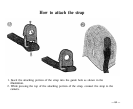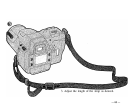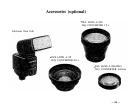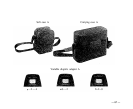Exposure compensation and film speed
Fixed proper exposure
Proper exposure refers to the balance of light
and dark in a photo. When shooting a black
and white wall, the exposure will be based on
the average ratio of black and white—thus the
overall exposure is set for grey. This is technically
called "fixed proper exposure". A good example
of this is a subject with a strongly lit background.
The reason the subject turns out dark is because
there is more brightness than darkness in the
frame. Therefore, the fixed proper exposure is
based on the total level of light in the photo,
which is significantly brighter than the subject.
In the case of strong backlighting, the exposure
needs to be adjusted to compensate for
brightness.
Adjusting exposure to accommodate lighting
conditions is called exposure compensation.
When ESP light metering is used, the camera
automatically judges the light and compensates
for the proper exposure, so manual exposure
compensation is not needed.
Exposure compensation
With the IS-1, + / - 4EV exposure compensation
in 1/3 EV steps is possible. [+] compensation
will make a subject appear brighter, while [ —]
compensation will make a subject appear darker.
Under backlit conditions you'll want to make
your subject appear brighter (+1 to +2EV).
For shooting winter snow scenes, you may want
adjust the exposure for additional definition
(+2EV). Or, suppose your picture is composed
of a black wall, (— 2EV) compensation would
most likely be appropriate.
Film speed
Film speed is listed on the back of the film
package. ISO 100, ISO 200, ISO 400 are the most
common. High-speed film (ISO 400), as implied
by its name, is for taking photos of fast moving
subjects, action shots for example. However there
are other advantages to high-speed film. With
high-speed film, such as ISO 400, you are able to
take pictures in lower light. And the distance
covered by the flash will be greater.
The camera is recommended for use of "DX"
film cartridges, ISO 25, 32, 50, 100, 200, 400,
800, 1600 and 3200. In the case of non-DX cod-
ed film, film speed is automatically set to ISO 32.
Also, films with middle speeds such as ISO 64,
160 and 1000 are automatically set to the next
lower speed. When using middle-speed films, use
the exposure compensation.
ISO (64: -0.3EV ISO 160:-0.7EV ISO 1000.--0.3EV
— 60 —




